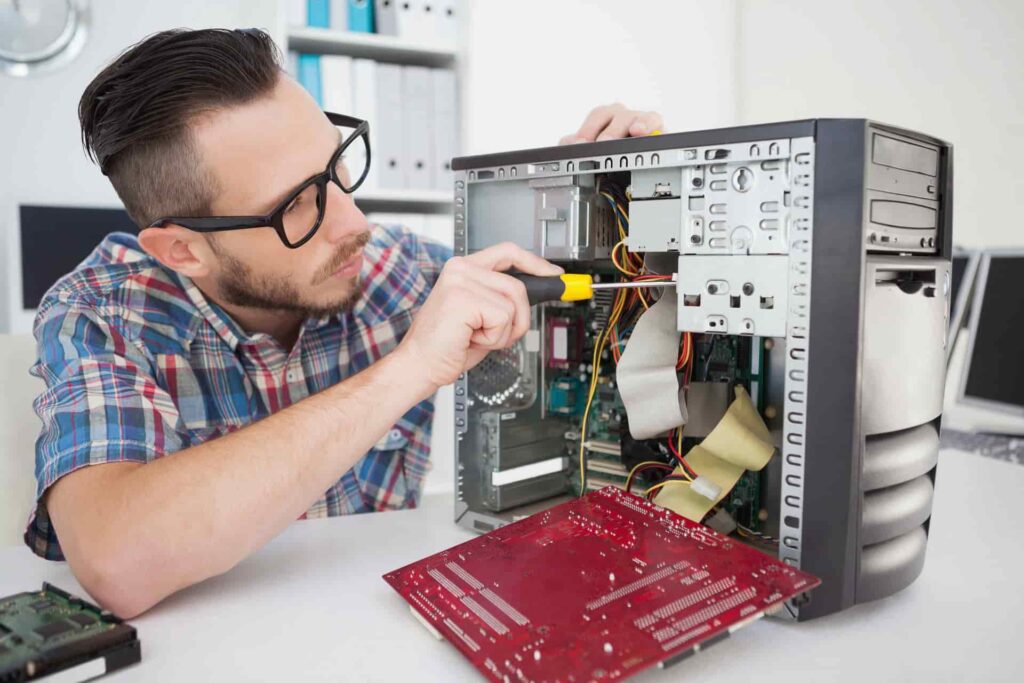In today’s world, computers have become a crucial part of your daily life, and any issue with them can be extremely frustrating. Whether it’s slow performance, system crashes, or any other problem, it’s important to resolve it as soon as possible. This article presents some valuable troubleshooting tips from experts in Adelaide for computer repairs to help you fix common issues. Adelaide has ranked as Australia’s 5th most populous city with a total population of 1,553,036 in 2023.
Slow Performance
Slow performance is one of the most common computer issues and can be caused by various factors. To troubleshoot this problem, start by closing any unnecessary programs or windows and freeing up memory. You can also check your computer’s task manager to see if any programs or processes are consuming too much CPU or memory. If this doesn’t work, try running a virus scan or updating your software and drivers. On average, professional services in Adelaide for computer repairs charge between $50-$100 per hour for such troubleshooting and diagnosis services, with additional fees for more complex repairs.
Crashes and Freezes
If your computer is freezing or crashing frequently, it can be due to several reasons, including malware, outdated software, or hardware issues. Start by running a virus scan and updating your software and drivers. If this doesn’t work, try disabling any startup programs that could be causing the issue. If the problem persists, you may need a professional to diagnose and repair the hardware issue.
Blue Screen of Death (BSOD)
The infamous BSOD is a common issue that indicates a serious system error. It can be caused by hardware failure, outdated drivers, or software conflicts. To troubleshoot this problem, restart your computer and update your drivers and software. You can also run a virus scan and check for any recently installed programs or updates that could be causing the issue.
Internet Connection Issues
Internet connection issues can be frustrating and can be caused by several factors, including network issues, software conflicts, or hardware problems. To troubleshoot this issue, restart your modem and router and check your cables and connections. You can also try resetting your network settings or updating your network drivers. If the problem persists, you may require to contact your internet service provider or have a professional diagnose and repair the issue.
Printing Problems
Printing problems can be caused by various factors, including connectivity issues, outdated drivers, or hardware problems. To troubleshoot this issue, check your printer’s connectivity and ensure it’s turned on and connected to your computer. You can also update your printer’s drivers and check for any error messages or paper jams. If the problem persists despite attempts at self-repair, it is advisable to get assistance from a professional to diagnose and fix any potential hardware issues.
Strange Noises
Strange noises coming from your computer can be a sign of hardware failures, such as a failing hard drive or fan. To troubleshoot this issue, open your computer’s case and check for any loose or damaged components. You can also use a hardware diagnostic tool to test your computer’s components and identify any failing parts. If the issue continues, professional assistance is recommended to diagnose and repair potential hardware problems.
Battery Issues
These issues can be frustrating, especially if you rely on your laptop or mobile device for work or communication. To troubleshoot this issue, start by checking your battery’s health and performance using your device’s battery diagnostic tool. You can also try recalibrating your battery or adjusting your power settings to improve battery life. If the problem remains unresolved, it is recommended to seek the help of a professional for hardware diagnosis and repair.
In conclusion, troubleshooting computer issues can be frustrating, but with the correct knowledge and tools, you can often identify and fix the problem yourself. If the issue persists or is more complex, it’s always best to seek the guidance of professionals. By following these troubleshooting tips and seeking professional help when needed, you can keep your computer running smoothly and avoid downtime and data loss.
